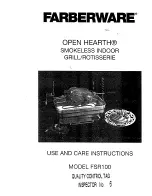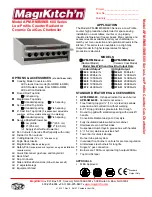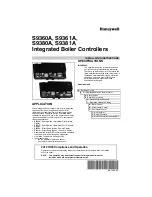
Page 4 of 12
Zip Hydroboil - Installation & Operating Instructions - 81419 - January 2004
f)
In all installation instances the walls of the heater must be verticle and the
base horizontal, there can be no exceptions to this rule.
Note:
If the water pressure is likely to exceed 700 kPa, a 350 kPa pressure
reducing valve must be installed in the cold water supply line.
Before you begin
Locate the paper mounting-hole template packed with the heater.
Read the installation and operating instructions completely.
Decide whether to install with concealed or exposed plumbing and / or
electrical connections. Concealed connections are preferred for a superior
appearance.
If the heater is used for filling cups, then insert the flow restrictor into the
outlet pipe before securing tap assembly.
Step 1 - Positioning
Position the heater so the tap will drain onto the draining board or drip tray.
Position the base of the tap to be not less than 200 mm above the draining
board. ( height should be increased only if it is essential to accommodate
larger vessels.)
Minimum clearances for service are 150 mm top, 65 mm left and 20 mm right.
Mark corner position on wall so to position mounting-hole template.
Step 2 - Fastening
Position mounting-hole template on the wall and drill mounting holes where
shown.
Drill holes for water inlet, vent outlet and wiring if it is intended to install the
heater with concealed electrical and plumbing connections.
Remove cover fastening screws and lift cover away from chassis.
Install plumbing and wiring, and prepare pipe ends for connection as shown in
step 3.
Screw heater chassis to wall using screws or bolts suited to the wall surface.
Screws/bolts must be able to support the following weights when filled.
Installation Procedures
15 litre models
34.5 kgs
25 litre models
47 kgs
40 litre models
71 kgs
Installation Requirements
continued
This switch must provide all-pole disconnection and a contact seperation of
at least 3 mm installed in accordance with wiring rules.
c) Cold water supply with a minimum working pressure of 100 kPa and a
maximum working pressure of 700 kPa connected via an isolation valve.
d) Outlet drainage to a sink draining board or to a drip tray.
e) Access to drainage from a vent situated at the base of the heater.






























